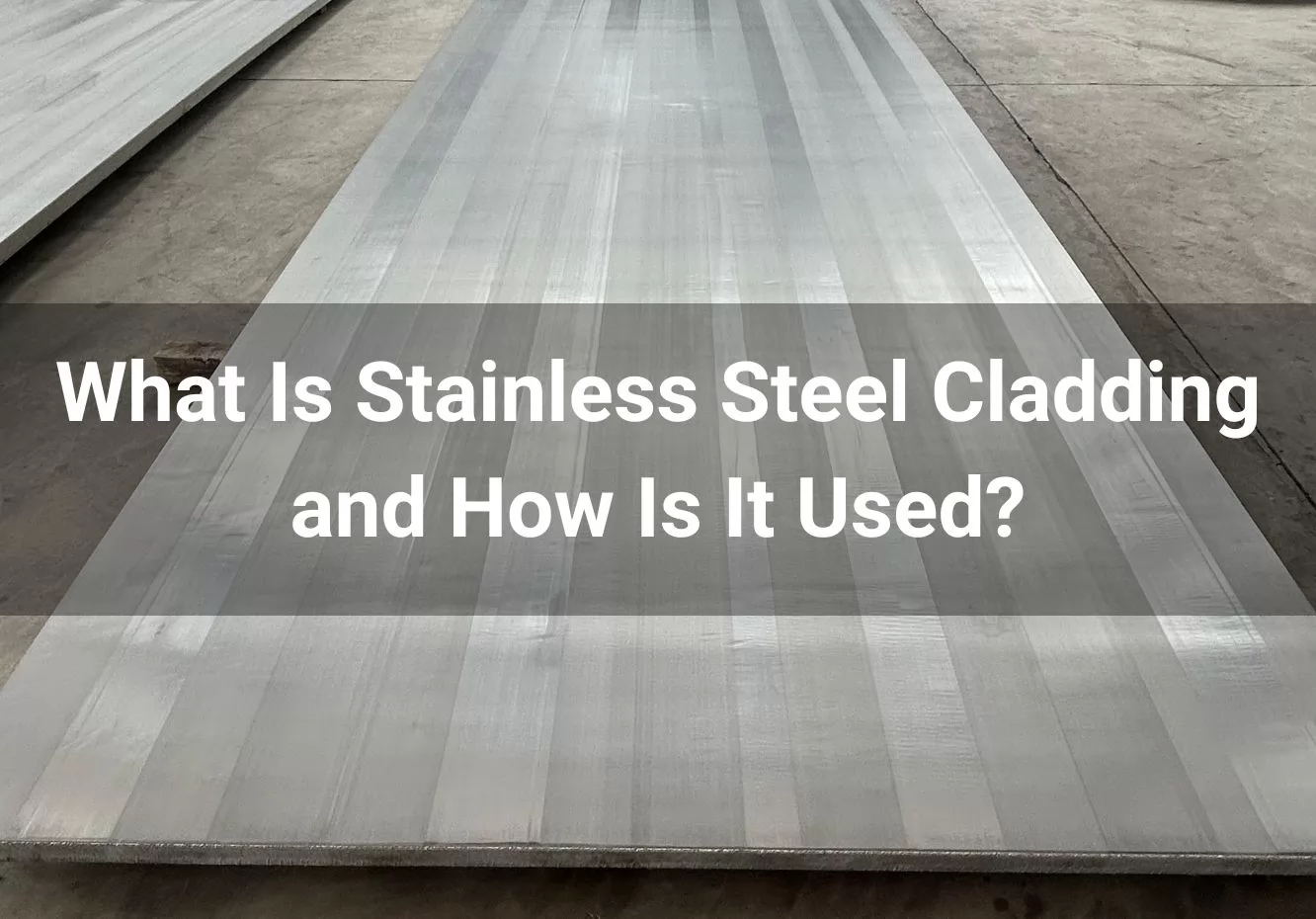

Stainless steel cladding is a process that involves bonding a layer of stainless steel onto the surface of another material, typically a lower-cost or structurally advantageous substrate such as carbon steel or aluminum. This technique is widely used in industries that require the strength, corrosion resistance, and aesthetic appeal of stainless steel while reducing costs by using alternative materials for the core.
In this blog, we’ll explore what stainless steel cladding is, how it is performed, its benefits, and its applications across various industries.

Stainless steel cladding is achieved by joining a thin layer of stainless steel to a substrate through various methods, such as:
1. Explosive Bonding: This involves using controlled explosives to create a high-energy impact, fusing the two materials together.
2. Roll Bonding: In this method, the materials are heated and passed through rollers to create a strong bond.
3. Welding Overlay: A stainless steel layer is welded onto the substrate, creating a robust metallurgical bond.
4. Mechanical Bonding: Stainless steel sheets are mechanically fastened to the substrate without using heat.
The choice of method depends on the desired properties, application, and cost considerations.
1. Corrosion Resistance
Stainless steel cladding excels in protecting against rust and corrosion, even in the most challenging environments such as marine settings or chemical industries. Its chromium-rich surface forms a passive oxide layer, preventing damage from moisture, salt, and other corrosive elements, thereby extending the lifespan of the underlying structure.
2. Cost Efficiency
By applying stainless steel only as a surface layer, manufacturers can achieve significant cost savings compared to using solid stainless steel. This method ensures the core material provides structural support while the stainless steel surface delivers superior performance, making it an economical yet highly effective solution.3. 3.Durability
Stainless steel cladding combines the mechanical strength of the core material with the toughness of stainless steel, resulting in exceptional durability. This synergy ensures resistance to wear, impact, and environmental factors, making cladded materials reliable for both structural and industrial applications.
4. Improved Appearance
The polished and sleek finish of stainless steel lends a sophisticated and professional look to cladded surfaces. Its aesthetic appeal makes it a popular choice for decorative purposes, such as building facades, interior designs, and high-end appliances, while maintaining functional benefits.
5. Thermal and Chemical Resistance
Cladded stainless steel is designed to perform under extreme conditions. Its ability to withstand high temperatures, coupled with resistance to exposure to aggressive chemicals, makes it ideal for demanding industrial processes in sectors like petrochemicals, pharmaceuticals, and food processing.Stainless steel cladding offers a combination of functionality, durability, and aesthetic value, making it a versatile choice across various industries.
One major issue is the high initial cost due to the complex manufacturing processes like explosive bonding or roll bonding, which require advanced technology and expertise. Additionally, not all materials are compatible with stainless steel cladding, and differences in thermal expansion rates can lead to bonding failures or delamination over time.
Another concern is the potential for corrosion at the bond interface if not properly sealed or maintained, especially in harsh environments. Despite its durability, the stainless steel layer can be scratched or dented, exposing the substrate and compromising the cladding's effectiveness. Furthermore, the added weight of the cladded material can be a disadvantage in applications requiring lightweight structures, such as aerospace or automotive industries.
Yes, stainless steel cladding is generally considered safe and widely used in applications requiring durability, hygiene, and resistance to corrosion. Its safety stems from several factors:
1. Non-Toxic and Food-Safe Properties
Stainless steel is non-reactive, making it ideal for food processing, medical equipment, and pharmaceutical industries. It does not leach harmful substances, ensuring that products remain safe for human consumption or use.
2. Corrosion Resistance
The stainless steel outer layer protects against rust and chemical reactions, even in harsh environments, making it a safe choice for structural and industrial applications where longevity and reliability are crucial.
1. Construction and Architecture
Used for building facades, elevator panels, and roofing to provide both aesthetic appeal and weather resistance.
2. Oil and Gas Industry
Cladded pipelines and pressure vessels resist corrosion and maintain structural integrity under extreme conditions.
3. Chemical Processing
Tanks, reactors, and heat exchangers use stainless steel cladding to handle corrosive substances.
4. Shipbuilding
Hulls, decks, and other ship components benefit from corrosion resistance in marine environments.
5. Automotive and Transportation
Decorative and functional parts, including trim and undercarriage components, use stainless steel cladding for durability and appearance.
6. Food and Beverage Industry
Cladded surfaces are used in equipment like storage tanks and conveyor belts, meeting hygiene and safety standards.
7. Energy Sector
Nuclear and renewable energy facilities use cladded stainless steel components for their high performance and reliability.
Stainless steel cladding is an innovative solution that balances cost, performance, and aesthetics. By leveraging the benefits of cladded materials, industries can achieve enhanced functionality while maintaining budget constraints. Whether you’re constructing a building, designing industrial equipment, or fabricating ship parts, stainless steel cladding offers a versatile, durable, and cost-effective option.
Stainless steel cladding combines the best of two worlds: the affordability and mechanical properties of base materials with the corrosion resistance and elegance of stainless steel. Its applications span across industries, proving its adaptability and reliability. Whether for industrial, architectural, or decorative purposes, stainless steel cladding is a key innovation driving advancements in materials engineering.
Would you like to implement stainless steel cladding in your next project? Feel free to contact Fugo Tech immediately, or share your thoughts or questions in the comments below!
Read More:
Comparison of Mechanical Properties for Titanium-Steel Clad Plates - FUGO Tech
Nickel Clad Plate & Titanium Clad Plate in Flue Gas Desulfurization Systems - FUGO Tech
Applications of Zirconium-Steel Clad Plate - FUGO Tech
[Material info] Applications of Titanium Clad Plates - FUGO Tech
Elements of Butt Welding of Titanium Steel Clad Plates - FUGO Tech
What is a Titanium Steel Clad Plate and How Is It Used? - FUGO Tech



Fugo Tech is focused on the manufacturing of clad metal plate and distributes the Stainless Steel, Titanium, Nickel Alloy, Zirconium and other non-ferrous metal pipes, fittings, flanges, and fasteners.